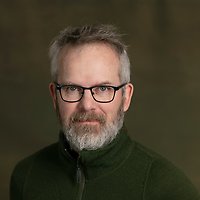Forskningsområden: Bioinformatik och genetik
Forskningsämnen: Evolution, Taxonomi & artbeskrivning
Project overview
Project period: 2017 - Ongoing
Participating units from the museum: BIO
Caption: View from 3,500m above sea-level at Mount Scratchley, South-eastern Papua New Guinea where part of the fieldwork for this project was carried out. Photo: Knud Andreas Jønsson
How do species form? And how do certain sets of species assemblages (ecological communities) come to occupy specific areas?
Examples of species assemblages include flowering plants in a meadow or birds on an island. The formation of species and communities have long intrigued and fascinated scientists, and a central question in biology centres around why particular species and assemblages proliferate in specific regions and ultimately why the composition of species differ so dramatically among regions worldwide.
Through fieldwork in Indonesia, Papua New Guinea, The Solomon Islands and French Polynesia, this project has amassed data (genomic satellite tracking, malaria parasites, microbes) for birds to analyse and determine how species and communities evolve and re-distribute in space and through time.
Project description
Island systems have played a disproportionally large role in the study of the evolution, redistribution and maintenance of biological diversity. Contributions by Darwin and Wallace formed the antecedent work for the formulation of the equilibrium theory of island biogeography by MacArthur and Wilson in which they predicted species richness and turnover on islands as an emergent equilibrium between immigration and extinction.
Similarly, ecologists and biogeographers have long been aware of the value of elevational gradients for understanding how plant and animal communities form and recent work along elevational gradients has led to novel insights about how patterns of species diversity respond to environmental gradients. Ultimately, the distribution of diversity through space and time must reflect the net result of speciation, extinction, and dispersal processes. While an understanding of these processes has been pursued for centuries, both independently and in combination, we are still far from a coherent understanding of how diversity patterns are generated.
Moreover, spatial variation in diversity results from the interplay of ecological and evolutionary mechanisms acting over contemporary and evolutionary time scales. Using birds on Indo-Pacific islands, this research provides an in-depth understanding of the relative importance of the processes that govern community assembly and the distribution of species. Ultimately, this allows for an informed discussion of how we can better preserve biodiversity on our Planet in the face of human induced environmental and climatic alterations.
Financiers
Selected publications
- Jønsson KA, Thomassen EE, Iova B, Sam K & Thomsen PF (2023) Using environmental DNA to investigate avian interactions with flowering plants. Environmental DNA 5:462–475.
- Ge D, Qu Y, Deng T, Thuiller W, Fišer C, Ericson PGP, Guo B, Sancha NU de la, Heyden S vd, Hou Z, Li J, Abramov A, Vogler AP, Jønsson KA & Mittermeier R (2022) New progress in exploring the mechanisms underlying extraordinarily high biodiversity in global hotspots and their implications for conservation Diversity & Distributions 28: 2448–2458.
- Pujolar JM, Blom MPK, Reeve AH, Kennedy JD, Marki PZ, Korneliussen TS, Freeman BG, Sam K, Linck E, Haryoko T, Iova B, Koane B, Maiah G, Paul L, Irestedt M & Jønsson KA (2022) The formation of avian montane diversity across barriers and along elevational gradients. Nature Communications 13:268.
- Reeve AH, Kennedy JD, Pujolar JM, Petersen B, Blom MPK, Alström P, Haryoko T, Ericson PGP, Irestedt M, Nylander JAA & Jønsson KA (submitted). The formation of the Indo-Pacific montane avifauna. bioRxiv.
- Reeve AH, Willemoes M, Paul L, Nagombi E, Bodawatta KH, Ortvad TE, Maiah G, Jønsson KA (2022) Satellite tracking resident songbirds in tropical PLoS ONE 17:e0278641.
- Reeve AH, Gower G, Pujolar JM, Smith BT, Petersen B, Olsson U, Haryoko T, Koane B, Maiah G, Blom MPK, Ericson PGP, Irestedt M, Racimo F & Jønsson KA (2023) Population genomics of the Island thrush elucidates one of earth’s great archipelagic radiations. Evolution Letters 7:24–36.
- Kennedy JD, Marki PZ, Reeve AH, Blom MPK, Prawiradilaga DM, Haryoko T, Koane B, Kamminga P, Irestedt M & Jønsson KA (2022) Diversification and community assembly of the world’s largest tropical island. Global Ecology and Biogeography 31:1078–1089.
- Vinagre-Izquierdo C, Bodawatta KH, Chmel K, Renelies-Hamilton J, Paul L, Munclinger P, Poulsen M & Jønsson KA (2022) The drivers of avian haemosporidian prevalence in tropical lowland forest of New Guinea in three dimensions. Ecology and Evolution 12:e8497.
- Bodawatta KH, Synek P, Bos N, Garcia‐del‐Rey E, Koane B, Marki PZ, Albrecht T, Lifjeld J, Poulsen M, Munclinger P, Sam K & Jønsson KA (2020) Spatiotemporal patterns of avian host‐parasite interactions in the face of biogeographical range expansions. Molecular Ecology 29:2431–2448.
Project members
- Andrew Reeve, Natural History Museum of Denmark
- Marti Pujolar, Natural History Museum of Denmark
- Kasun Bodawatta, Natural History Museum of Denmark
- Martin Irestedt, Swedish Museum of Natural History (BIO)

External participants
- Vojtech Novotny, Department of Ecology, Institute of Entomology, Biological Centre, Czech Academy of Sciences, BranisovskA 31, 37005 Ceske Budejovice,
- Binatang Research Centre, Madang, Papua New Guinea
- Bulisa Iova at the PNG National Museum and Art Gallery in Port Moresby
- Museum Zoologicum Bogoriense
- Tri Haryoko at the Museum Zoologicum Bogoriense, LIPI/The National Research and Innovation Agency of the Republic of Indonesia (BRIN), Cibinong Science Center, Cibinong, Indonesia
- Dewi M. Prawiradilaga at the Museum Zoologicum Bogoriense, LIPI/The National Research and Innovation Agency of the Republic of Indonesia (BRIN), Cibinong Science Center, Cibinong, Indonesia
Project manager

Project member



Senior Curator and Deputy Head of Department
Bioinformatics and genetics
martin.irestedt@nrm.se


